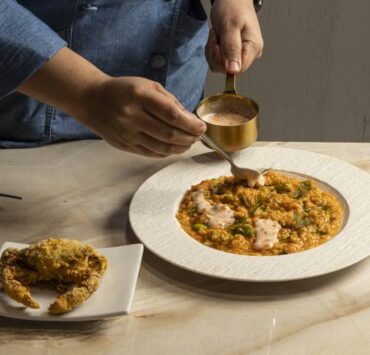Ceramic-making is just as much about patience as it is about trust
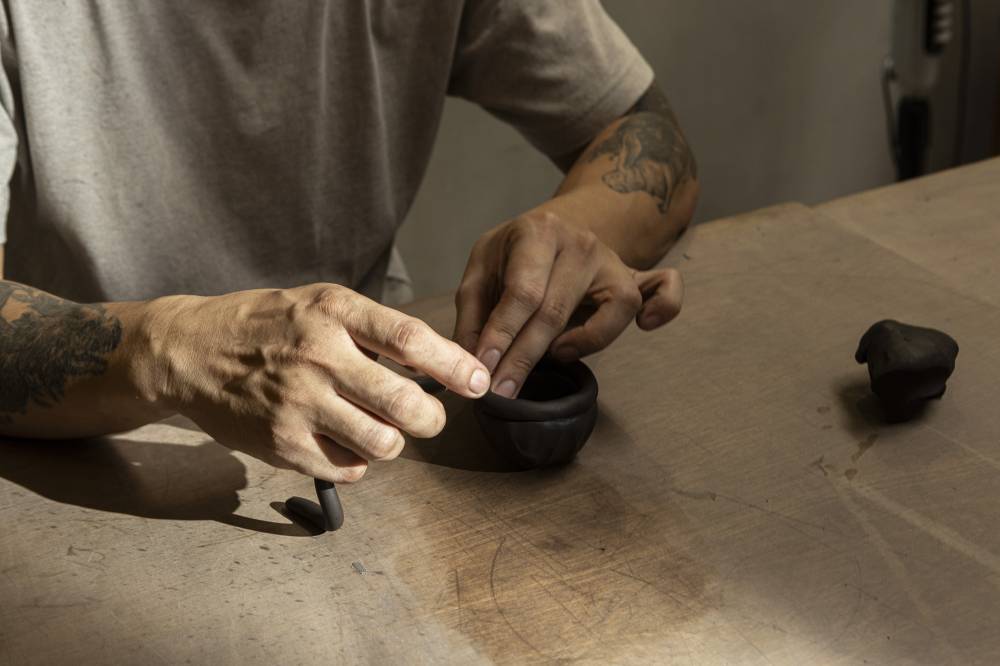
It was raining hard the day we first visited Studio Roman. Tucked along a narrow street in a residential area of Malate, just a few minutes away from De La Salle – College of Saint Benilde, the ceramic studio and art gallery opened up to an inviting warmth. And it wasn’t just because of the kiln that stood by the entrance.
Parting the noren hanging over the doorway, you’d be greeted by the lightness of the space—high ceilings, a wall flanked by thriving plants, and supporting shelves and tables bearing dark clay figures that are left to sit and dry. This space is cut by a spiral staircase, leading up to an opposite world, if you will. The quiet calm of the first floor—a workshop space—is contrasted by the maximalism of the second floor, the gallery, which houses ceramics in all shapes, sizes, and colors.
The coziness of the space may well be because of its origins. It used to be the family ancestral home of Oman Santos, which has, since his resumption of his ceramic art practice, been transformed into Studio Roman.
Santos first learned ceramics in 2013, at the suggestion of his brother. But it would take years before Santos would find himself deeper in his art practice. In 2021, amid the pandemic, he resumed working with clay and eventually bought his own kiln to fire his works.
This sparked the beginning of Studio Roman, his own space—and now a shared space for others to experience and experiment with ceramics, too.


Art and science
As one might expect from a self-owned studio, every corner of Studio Roman is filled with Santos’ work—from the mugs used to serve guests, to the decor in their small fish pond, down to the clinking wind chimes and tiny bits and bobs scattered over desks, which are shaped like flowers, fruits, and even tiny humans.
“I like to keep my hands busy. Mahilig akong magbusisi tsaka magbutingting,” he says of his affinity for ceramics. “It’s therapeutic. It helps me relax.”
Santos works as a project manager on most days, and finds ceramic-making, his chosen art, as his best outlet. “It’s a way to destress myself. Pero pag nakikita niyo ‘yong work ko, minsan mukha nga siyang nakakapagod. Pero ‘yong pagbubutingting, do’n ako na-re-relax,” he adds.
In the gallery, a wall is filled with 180 pieces of ceramic corals, all made by Santos. He explains that this is his most popular work—the one that people often come to see. The coral pieces are incredibly detailed, as if plucked from the seas themselves. An earlier collection called “Bahura ng West Philippine Sea” also features these specimen-like artworks, highlighting rare corals found in the region. Initially on display at the University of the Philippines Marine Science Institute, the collection is now also permanently housed at Studio Roman.

The accuracy of his works owes to his own background in science. “‘Yong thesis ko no’ng college was about corals. Nakakatuwa ‘yong mga close up ng specimens na makikita mo,” he says of the inspiration. “Mahilig [din] ako mag-travel, so when I go to the beach during low tide, I go to one of the spots, then I just stay there and look at the small creatures. Naisip ko, paano kaya kung i-incorporate ko siya sa ceramics? That’s when I started to have this more encompassing theme sa works ko.”
Santos defines his body of work as art that follows a “KKK” theme: kadiri, kilabot, at kontrabida. “Pag kadiri kasi, it’s more than just gross. Titingnan mo siya ulit eh. Kapag kilabot naman, it’s more of dread, on persistent anxiety. Ang kontrabida naman, it’s the villain. Walang maganda kung walang pangit. So that’s the theme that I revolve around,” he says.
Transfer of knowledge
The quiet studio has its fair share of visitors, which Santos categorizes into two: “Those who want to see the place and the art, and those who want to learn.”
He holds workshops at the studio every Saturday. But unlike other ceramic (or, specifically, pottery) studios with half a dozen class options in their roster, Santos only offers one: a handbuilding ceramic crash course. The simplicity in the curriculum surprisingly lends to more elaborate output, as his students—after learning the basics—are free to create pieces and experiment with the clay as much as they like.
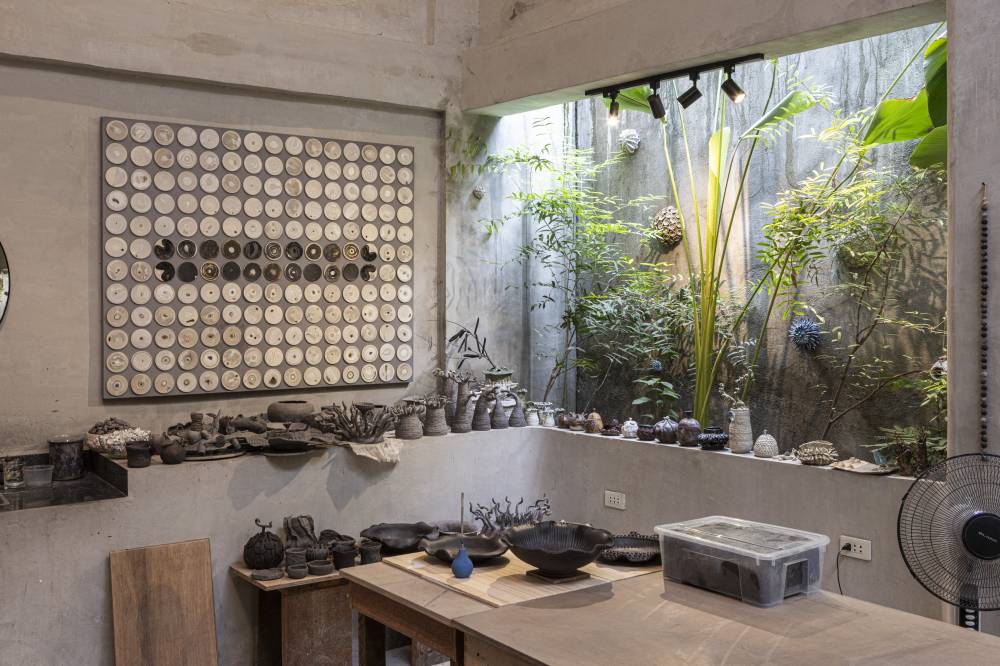
“Usually ‘yong mga students na pumupunta [dito] is ‘yong mga pagod, mga burnt out na sila. Doomscrollers, office workers,” Santos says. He knows the type, he says, because he’s been in the same boat. This common ground makes it easier for him and his students to connect, he finds. And although he—funnily enough—doesn’t like teaching (“Hindi kasi ako sanay sa tao. But if you want to be an expert in a field, there should be a transfer of knowledge.”), he does so. He considers his students one of the most fulfilling aspects of his art practice.
“‘Pag nalaman na nila ‘yong techniques, makakabuo na sila ng piece. Nakakatuwa nga ‘yan kasi pag binigyan mo sila ng time, magugulat ka na lang na ang ganda ng mga gawa nila.”
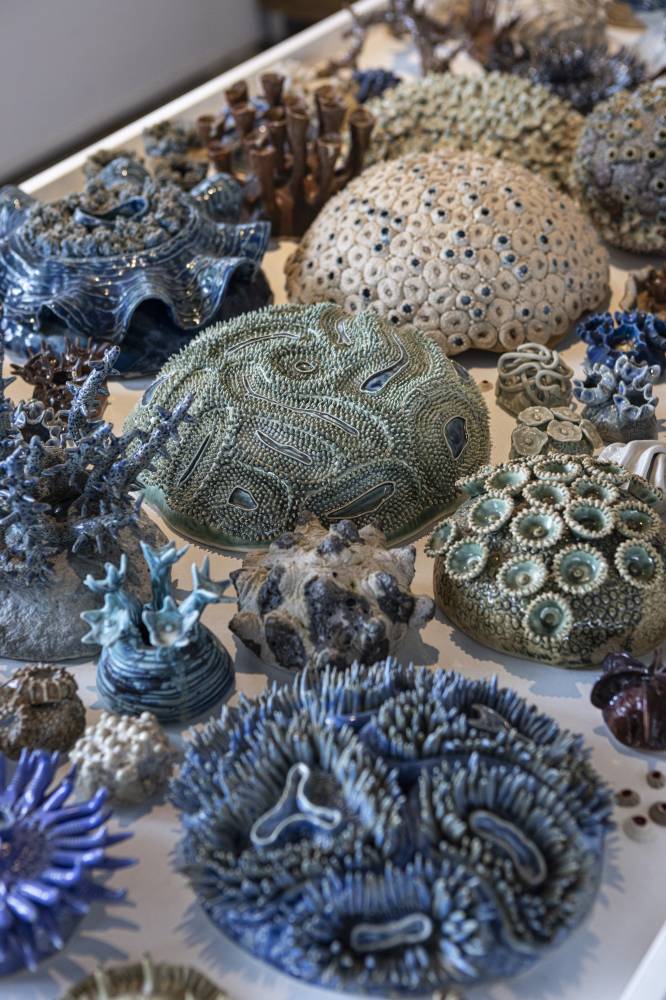
Accepting the slow process
Ceramic arts—pottery, specifically—has enjoyed a boom post-pandemic, with numerous studios and workshops opening up, making the traditional craft more accessible to contemporary hobbyists. The overall attention towards slow living, and subsequently, self-care and improving one’s mental health, also plays into the craft’s popularity, especially with its therapeutic benefits.
Santos’ students are the perfect case study. His students have spanned age ranges, from college students to professionals, even to senior citizens. His mother is actually a star student, from simply watching him make ceramics, to learning how to create her own (at 80 years old, she’s even done her own ceramics exhibit—also at Studio Roman).
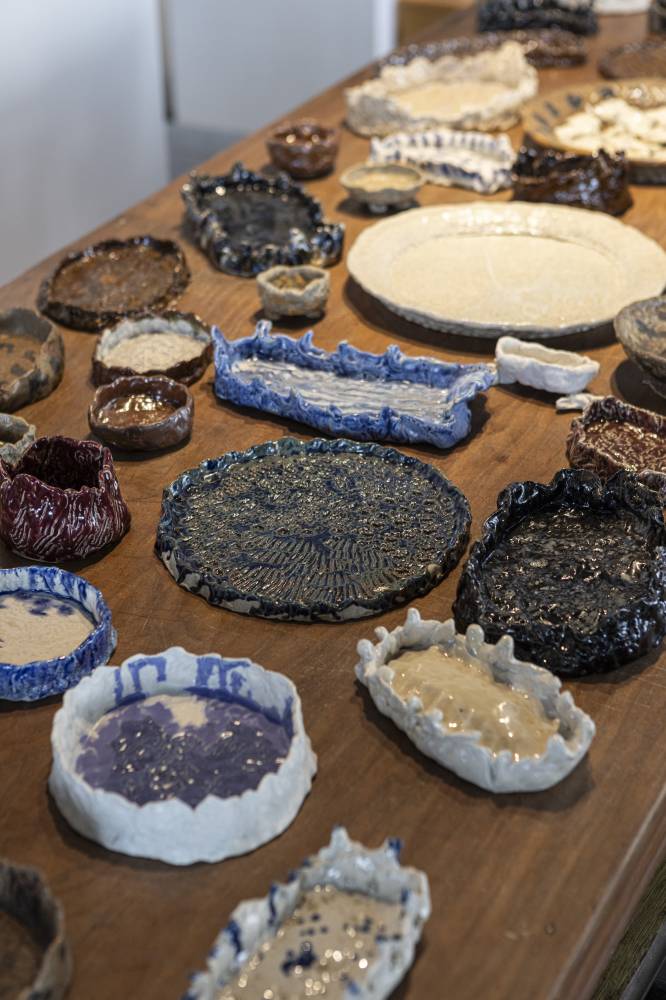
“From what I’ve observed, ‘yong mga students na pumupunta dito... they accept the slow process,” he shares. “Ang ceramics kasi, you cannot cram it. It’s not instant. From shaping the clay, drying it, then firing, then glazing, then firing again. Hindi mo siya makukuha talaga agad.”
But while the aspect of patience is easy for his students to adapt to, trusting the process of letting the clay take shape—and trusting your own creativity—tends to be harder. “Usually, ‘yong students, pag gumawa sila ng work nila, pangit daw. Hindi sila happy. I tell them, ‘It’s okay, let’s fire it, and when you see your work, let’s see how it is.’ And after maluto, natutuwa sila,” he says.

He recounts the experience of one student, who, frustrated at the outcome of their work, wanted to destroy their piece and start over. “Sabi ko, ‘wag na, iwan natin, tingnan natin pag na-fire. And ‘yon, tuwang-tuwa siya. ‘Buti na lang hindi ko sinira, buti na lang sinabi mo na mag-wait ako.’”
“Ang Hapon Bago ang Hapunan”
While we wandered and gazed around the idyllic Studio Roman, we would find tiny white porcelain flowers scattered through different rooms, on worktables, in bowls, and sometimes placed alongside other ceramic pieces.
The flowers—now a thousand blooms, strung together into garlands—form “Alay,” one of the highlights of Santos’ new collection. Called “Ang Hapon Bago ang Hapunan,” it takes inspiration from Philippine folklore and traditions. Much like his previous works, the new collection is also massive in scale, featuring a total of 213 ceramic pieces and four ceramic wall installations.
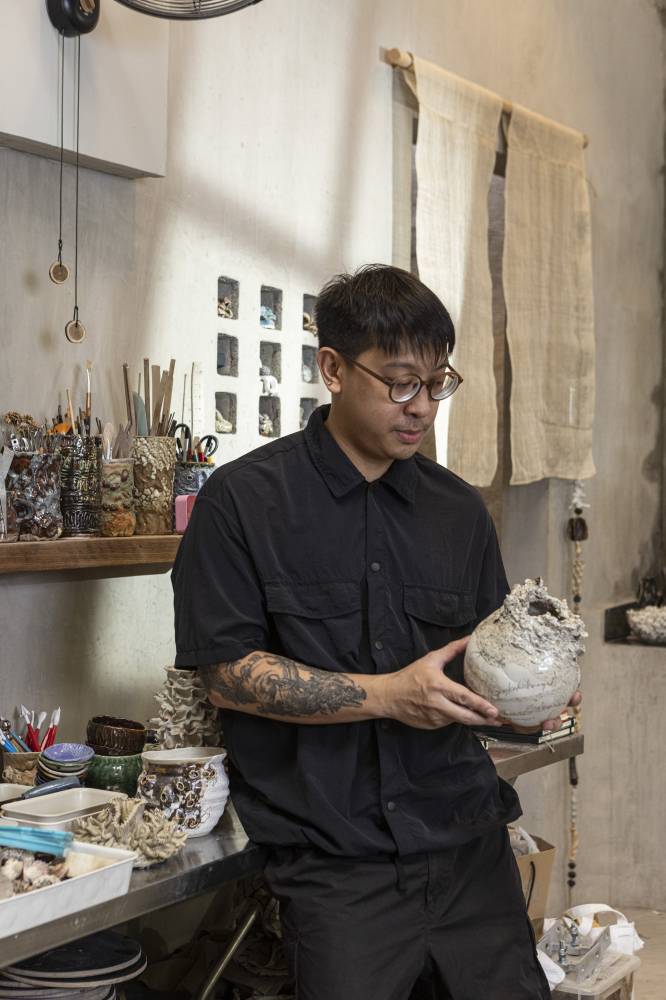
Poet and novelist Edgar Calabia Samar, in his introduction for Santos’ new collection, alludes to the myth that one must not eat food offered by engkantos or spirits, lest one be unable to return to the mortal world. The new collection, he writes, “dwells on this moment of offering, a feast set at the threshold between day and night, light and dark, the living and the unseen. It is an afternoon that invites rest and comfort for the weary and spent, yet to partake is to risk forgetting, crossing over, and leaving everything behind.”
Once again, Santos takes inspiration from the natural, infusing it with his signature element of kilabot—altogether creating intricate artworks that will keep you looking.

“Ang Hapon Bago ang Hapunan” is on public viewing from Nov. 16 to 30 at Studio Roman, Tuesdays to Saturdays by appointment. Message @studioromanph to schedule a viewing















